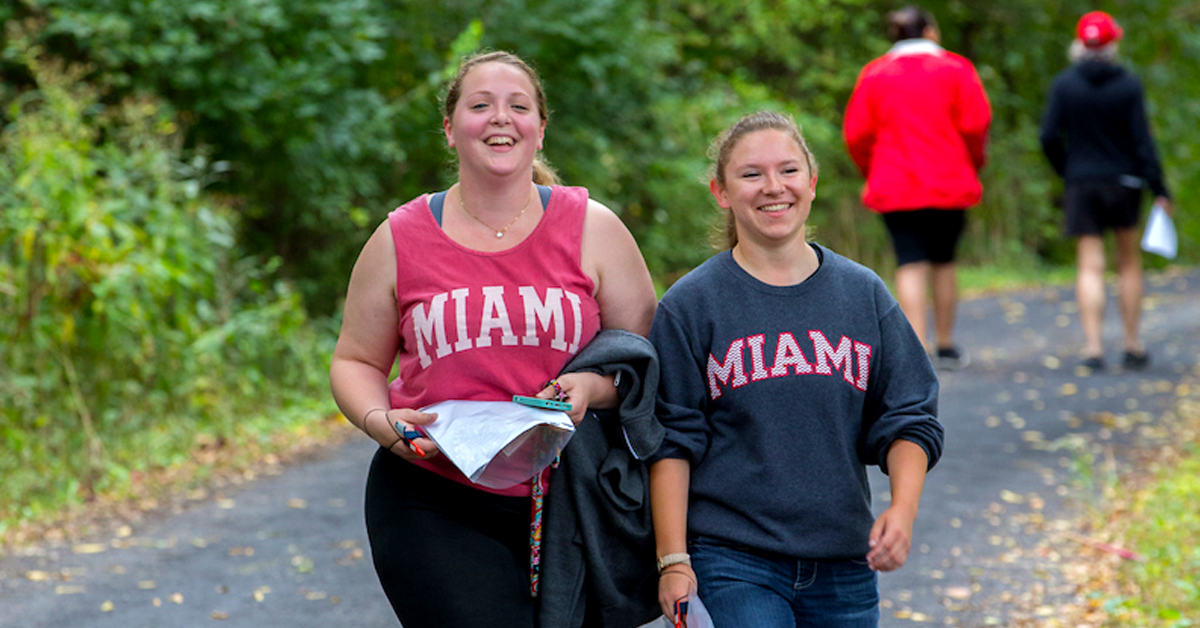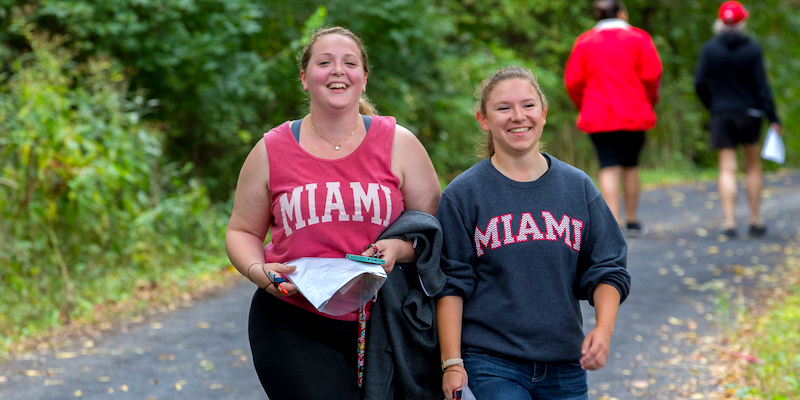Move More. Live Longer. It Can Really be that Simple.


James M. Loy, Miami University
Listen to the audio podcast
Read the story
It’s a behavior that can be so unhealthy, it is now linked to some of the worst chronic diseases. It can lead to heart disease, diabetes, and obesity. Even cancer. And if you’re reading this, you are probably doing it right now.
 Kevin Ballard “Some people have actually called sedentary behavior the new smoking,” says Kevin Ballard, Miami University assistant professor of exercise science.
Kevin Ballard “Some people have actually called sedentary behavior the new smoking,” says Kevin Ballard, Miami University assistant professor of exercise science.
Within the last 10 years, research has revealed that sedentary behavior -- also known as prolonged sitting or just an all-around lack of physical activity -- can be alarmingly harmful. And it’s probably going to get worse.
“I would expect that,” Ballard says. “We are not as physically active as we were a generation ago. So over the course of the next several decades, it is likely that the health problems associated with sedentary behavior are going to increase dramatically.”
It’s not hard to see why.
Modern culture encourages sedentary behavior in lots of ways. Office jobs that require constant computer use. Long commutes. Hectic lifestyles that minimize a positive work-life balance. And at home, we are often lullabied by the allure of big screen TVs, numerous streaming services, video games, and a growing obsession with digital devices.
“Screen time is a reflection,” says Kyle Timmerman, Miami University associate professor of exercise science. “The more screen time you have, the more sedentary we are. So the reason we focus on
That’s the bad news. But there’s good news too.
A little effort can make a big difference
Ballard examines exercise physiology and nutrition, as well as non-invasive measures of blood vessel function and the consequences of sedentary behavior. While Timmerman largely focuses on the positive and negative effects of inflammation.
It’s good, he says, when inflammation flares up to flush out an infection. However, as we age, baseline levels of inflammation begin to increase, which, just like sedentary behavior, is also linked to
“But we know that people that are more physically active, or that maintain a healthier body composition, avoid that age-related inflammation,” he says.
Ballard and Timmerman both study the mechanisms that will open new pathways for treatments, interventions, and lifestyle changes that can increase health, wellness, and longevity. And their next project, a collaborative clinical study, has already received funding through the National Institutes of Health.
 Kyle Timmerman Their upcoming 3-year project will examine the nutrient intake, vascular function, inflammation, and skeletal muscle protein synthesis of older adults, while also continuing to underscore the critical importance of physical activity.
Kyle Timmerman Their upcoming 3-year project will examine the nutrient intake, vascular function, inflammation, and skeletal muscle protein synthesis of older adults, while also continuing to underscore the critical importance of physical activity.
Of course, this idea, that exercise is good for us, is not news.
“We hear that all the time,” Ballard says. “But the biggest challenge is trying to get people to exercise. To become physically active. And there are a lot of barriers to that.”
So in addition to conducting research that delves much deeper into the physiological specifics of exercise science, Ballard and Timmerman are also concerned with helping more people overcome these barriers. And that often requires communicating what a big difference a little effort can make.
“In most
These benefits are often
The ACSM recommends about 30 minutes of daily physical activity. Until recently, it was recommended as a continuous session. But now, research has shown that separate, smaller daily increments are equally effective when added together. Plus, it doesn’t have to be the overly strenuous, “no pain no gain” kind of workouts that can seem daunting or discouraging.
This can help alleviate two of the biggest modern barriers to becoming and staying active: effort and time.
“And to somebody who has been relatively sedentary though their life, that helps them,” Timmerman says. “Because if I could just do a five-minute walk before lunch, a five-minute walk after lunch, walk with the kids or the dog or a friend after work. It doesn’t take too much to get to that recommended amount of physical activity.”
Exercise as medicine
There is another study that Timmerman often shares with students.
It concerned people with heart disease, who all had a certain level of coronary artery blockage and needed an intervention of some kind. They were then randomized into separate groups.
One group had the blockage removed immediately using a medical procedure via angioplasty. The other started a moderately intense exercise plan by cycling on a stationary bike.
“And they found that the percentage of these two groups who had survived 10 years later, and had the greatest level of function, were the
The importance of this finding suggests that the medical procedure, while effective, was ultimately limited. It was the result of a specific one-time procedure designed to fix a single problem.
But for the second group, exercise not only addressed the same problem (and with better results). It also had the added advantage of simultaneously imbuing the entire body with a host of restorative and on-going benefits.
 Studies like these are lending credibility to the idea that exercise itself is medicine. And it’s a perspective now gaining more attention from researchers. Because, currently, there is no other medicine or drug that has the expansive breadth of effects that exercise does.
Studies like these are lending credibility to the idea that exercise itself is medicine. And it’s a perspective now gaining more attention from researchers. Because, currently, there is no other medicine or drug that has the expansive breadth of effects that exercise does.
“Because drugs just affect one pathway,” says Ballard. “They target one pathway, target one disease. But exercise beneficially affects all the systems of the body.”
Timmerman introduces students to this same idea by asking a simple question. Which has more side effects? Exercise or medicine? They inevitably say medicine, because they’ve seen all those drug commercials too.
“
Even the ACSM now promotes exercise as medicine, and walking is often highlighted as a prime example because it’s probably the easiest way to get active. It’s also encouraging to think that such a simple everyday activity can be so helpful.
Still, for those who may be wondering, what is the best exercise? Is it walking? Running? Biking? Swimming?
“It’s the one that you will do,” says Timmerman. “That is the best exercise.”
Regardless of the activity, the real key is consistency. So stand up more. Move around. Take the stairs next time. Go for a walk later.
Or, better yet, start right now.

